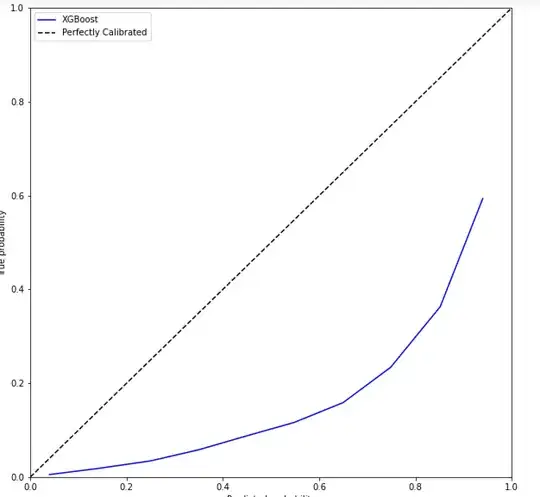I have an imbalanced dataset and am using XGBoost to create a predictive model.
xgb = XGBClassifier(scale_pos_weight = 10, reg_alpha = 1)
Although my recall and specificity are acceptable, I would like to improve the calibration curve. When I try using isotonic regression to calibrate my model, my predictive performance (recall and specificity) decrease dramatically. Any thoughts on how to maintain my metrics while improving calibration.
calibrated = CalibratedClassifierCV(xgb, X_train, y_train, cv=5)
calibrated.fit(X_train, y_train)
scores = cross_val_score(calibrated, X_test, y_test, cv = 5, scoring ='recall')
print(np.mean(scores))
#prints 0.17
xgb.fit(X_train, y_train)
scores = cross_val_score(xgb, X_test, y_test, cv = 5, scoring ='recall')
print(np.mean(scores))
#prints 0.74
Thanks in advance!
